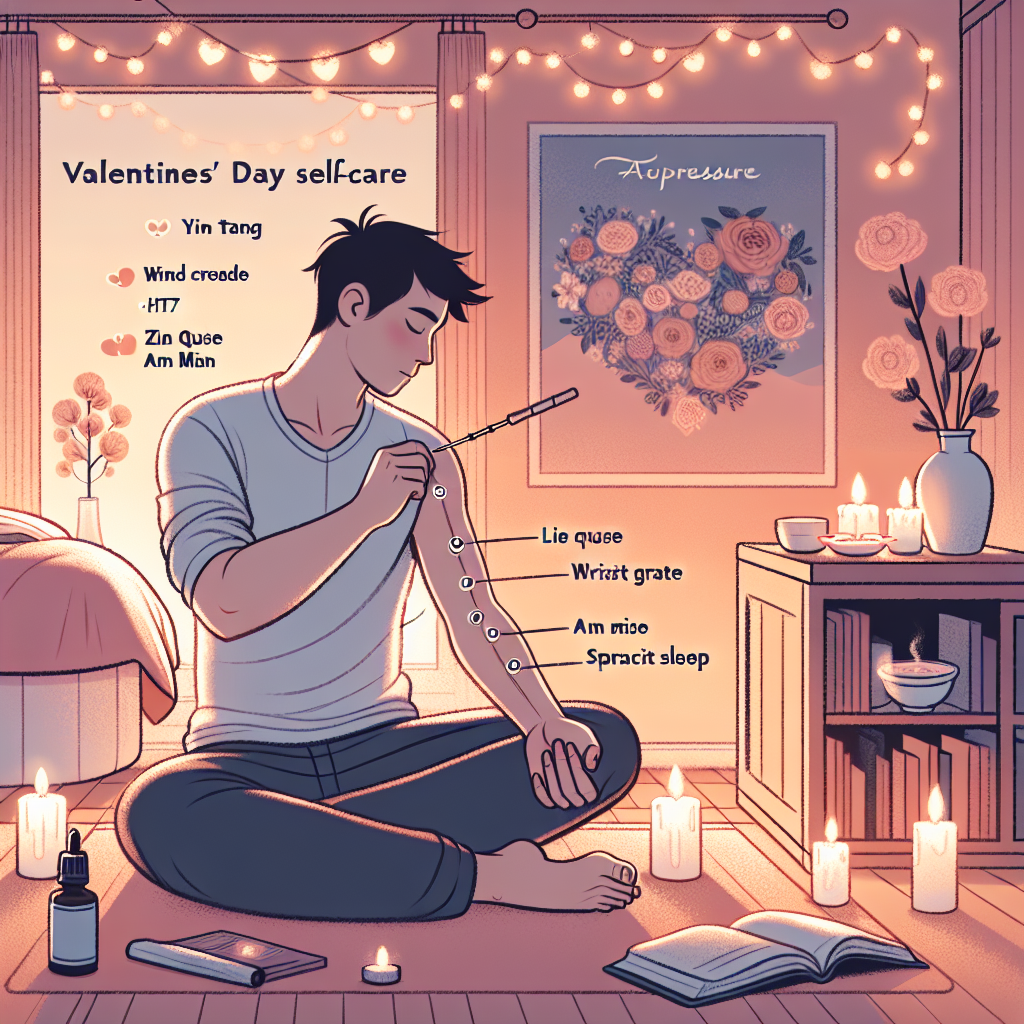
Valentine's Day Self-Care: Acupressure for Relaxation.
Share
Valentine’s Day is often associated with chocolates, flowers, and romantic dinners. But just as it’s a day to celebrate love for others, it’s also an excellent opportunity to show some love for yourself. Self-care is an essential component of mental and physical well-being, and what better way to pamper yourself than with a relaxing acupressure session?
Unlike other self-care routines that might demand a lot of planning or purchasing special products, acupressure is something you can do at home with minimal effort. All you need is some time, a quiet space, and an open mind to work with your body’s natural energy systems.
What is Acupressure?
Acupressure is an ancient healing practice rooted in Traditional Chinese Medicine (TCM). It involves applying gentle pressure to specific points on the body to stimulate energy flow, or “qi,” and promote relaxation, reduce stress, and enhance overall well-being. Think of it as acupuncture, but without the needles.
The beauty of acupressure is that it’s safe, non-invasive, and easy to learn, making it perfect for anyone looking to integrate self-care into their Valentine's Day routine.
How Can Acupressure Help with Relaxation?
Valentine's Day can sometimes come with stress or emotional strain, especially if you’re feeling lonely or overwhelmed by societal expectations. Acupressure can be your go-to solution for reconnecting with yourself, letting go of tension, and creating a sense of inner peace. By working with pressure points associated with relaxation, you can help:
- Relieve stress and anxiety
- Reduce muscle tension
- Calm your mind
- Improve sleep quality
Try incorporating a short acupressure session into your day to enjoy its calming and rejuvenating effects.
5 Acupressure Points for Relaxation You Can Use This Valentine’s Day
Below are five powerful acupressure points that you can use to relax and nurture yourself. Remember to apply firm but gentle pressure with your fingertips and breathe deeply as you hold each point for 1-2 minutes.
1. Yin Tang (Third Eye Point)
The Yin Tang point, also known as the “Third Eye Point,” is located between your eyebrows, just above the bridge of your nose. Stimulating this point can help relieve stress, anxiety, and mental fatigue. It’s perfect for calming your mind and finding inner clarity.
How to Use: Gently press the area with your index or middle finger in circular motions while taking slow, deep breaths. Close your eyes to enhance the effect.
2. Lie Que (Lung 7)
Lie Que is found on the inner side of the forearm, just below the base of the thumb. This point is associated with emotional well-being and can help release grief, sadness, and built-up tension.
How to Use: With your thumb and index finger, apply gentle pressure to this area and massage it for 1-2 minutes. Alternate between arms to balance your energy.
3. HT7 (Heart 7 or Spirit Gate)
HT7 is located at the crease of your wrist, just in line with your pinky finger. This point is known to calm the heart and mind, reduce insomnia, and alleviate emotional distress. It is often referred to as the “Spirit Gate” for its soothing effects on the inner self.
How to Use: Press this point on one wrist using your thumb, and massage it gently in a circular motion. Switch to the other wrist after a minute or two.
4. An Mian (Peaceful Sleep)
An Mian, which translates to “Peaceful Sleep,” is located just behind your earlobe. Stimulating this point helps soothe stress, relieve insomnia, and promote deep relaxation.
How to Use: Using your index and middle fingers, gently massage the area behind your earlobe. Make circular motions and allow yourself to sink into a calm and relaxed state.
5. Zu San Li (Stomach 36)
This point is found about three fingers' width below your kneecap, slightly off to the outside. While Zu San Li is commonly associated with boosting energy, it’s also great for reducing fatigue and improving general well-being.
How to Use: Use your thumb to apply firm, steady pressure to this point, massaging in slow circles. Alternate between legs to evenly stimulate both sides.
Creating the Right Atmosphere for Your Acupressure Session
To fully immerse yourself in the experience, create an environment that promotes relaxation. Here are some tips:
- Dim the lighting or light a soothing candle
- Play soft, calming music or nature sounds
- Sit or lie down in a comfortable position
- Diffuse essential oils like lavender or chamomile
- Keep a glass of water nearby to stay hydrated
Taking just a few minutes to set the mood can transform your acupressure practice into a full-on relaxation ritual.
Additional Tips for a Relaxing Self-Care Valentine’s Day
Aside from acupressure, consider incorporating other self-care activities to make your Valentine's Day truly rejuvenating:
- Take a hot bath: Add Epsom salts or a few drops of essential oils for a luxurious soak.
- Practice mindfulness meditation: Spend 10 minutes in silence focusing on your breath to center yourself.
- Enjoy a cup of herbal tea: Chamomile, ginger, or peppermint tea can enhance relaxation.
- Write in a gratitude journal: Reflect on what you love about yourself or moments you’re grateful for.
- Move your body: Whether it’s yoga, stretching, or a gentle walk, physical activity can help release tension.
Final Thoughts
Valentine's Day is about love, and that love starts with you. While it’s natural to focus on others, don’t forget to take a moment of appreciation for yourself. Acupressure offers a beautiful way to honor your own well-being and create space for rest and relaxation.
This Valentine’s Day, carve out some time for self-care with acupressure and other comforting practices. After all, the love you give to yourself radiates outward and enhances all areas of your life. You are worth it, today and every day.
